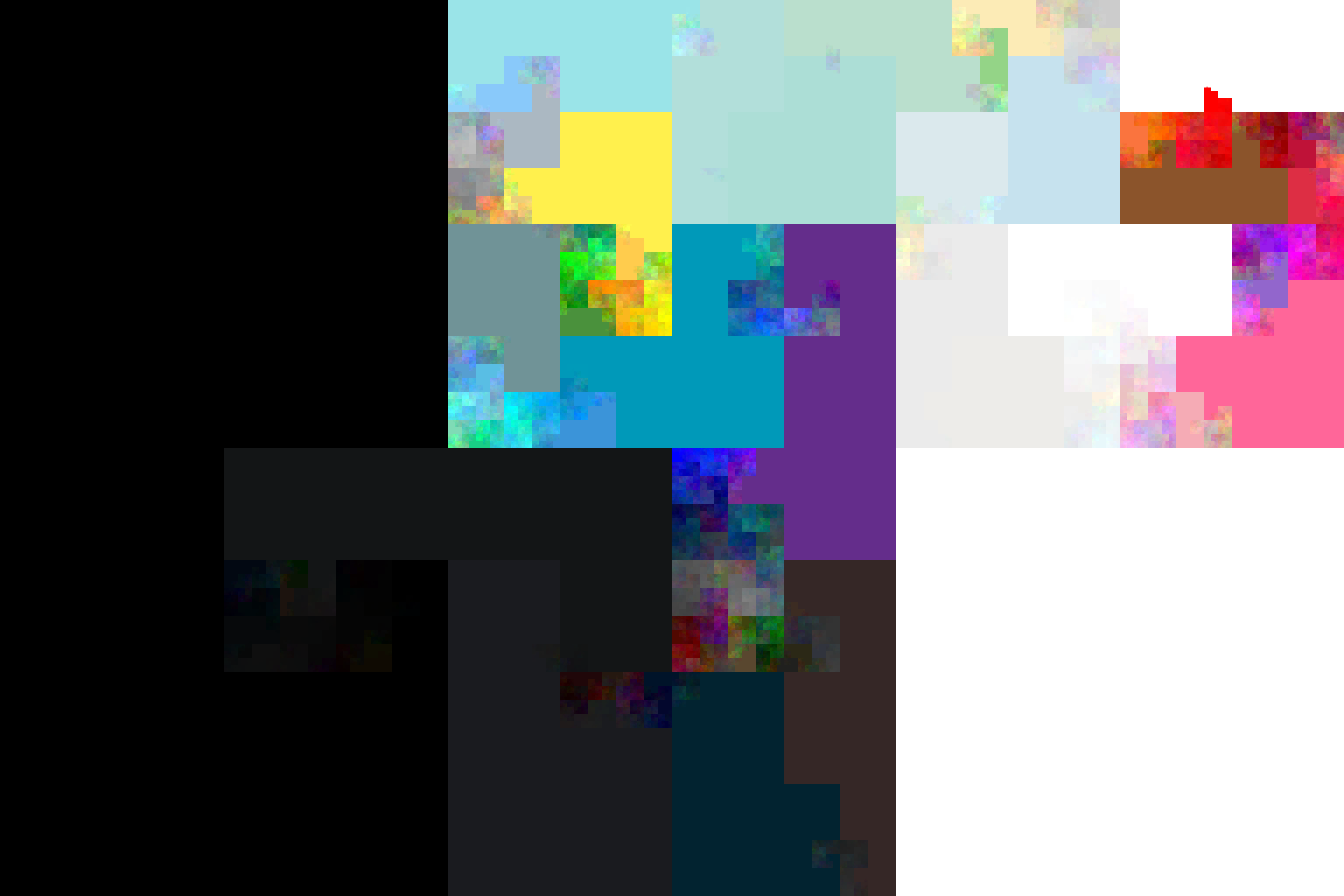Twitter Profile Background Colors
I collected tweets of
Here, I decided to put a 2D Hilbert curve
through the image and paint the colors in the order they are encountered by
a 3D Hilbert curve in the RGB cube. Ignoring the two default colors
#F5F8FA and #C0DEED, this produces this image:
And thanks to the Python packages hilbertcurve and pypng the code needed
to generate this image is quite harmless:
from math import ceil, sqrt, log2
from hilbertcurve.hilbertcurve import HilbertCurve
import png
"""
turn an RGB string like `#C0DEED` into a tuple of integers,
i.e., coordinates of the RGB cube
"""
def str2rgb(s):
s = s.strip("#")
return (int(s[0:2], 16), int(s[2:4], 16), int(s[4:6], 16))
"""
`color_histogram` is a dict mapping an rgb string like `#F5F8FA`
to the number of usages of this color
"""
def plot_background_colors(color_histogram, filename="colors.png"):
defaults = {"F5F8FA", "C0DEED"}
data = {str2rgb(rgb): d for rgb, d in color_histogram if rgb not in defaults}
# calculate the size of the resulting image
# for a 2D Hilbert curve, it mus be square with a width, which is a power of 2
num_pixels = sum(data.values())
min_width = ceil(sqrt(num_pixels))
exponent = ceil(log2(min_width))
width = 2**exponent
# output buffer for a `width x width` png, with 4 color values per pixel
buf = [[0 for _ in range(4 * width)] for _ in range(width)]
hc2 = HilbertCurve(exponent, 2)
# there are 256 = 2^8 values in each direction of the RGB cube
hc3 = HilbertCurve(8, 3)
sorted_rgbs = sorted(data.keys(), key=lambda x: hc3.distance_from_point(x))
idx = 0
for rgb in sorted_rgbs:
for _ in range(data[rgb]):
# get the coordinate of the next pixel
x, y = hc2.point_from_distance(idx)
# assign the RGBA values to the pixel
buf[x][4 * y] = rgb[0]
buf[x][4 * y + 1] = rgb[1]
buf[x][4 * y + 2] = rgb[2]
buf[x][4 * y + 3] = 255
idx += 1
png.from_array(buf, 'RGBA').save(filename)
The input histogram was in my case just a simple SQL query away:
SELECT profile_background_color, COUNT(profile_background_color) FROM users
GROUP BY profile_background_color;
